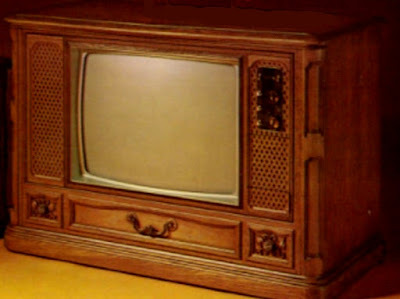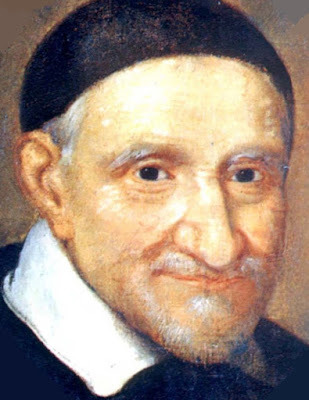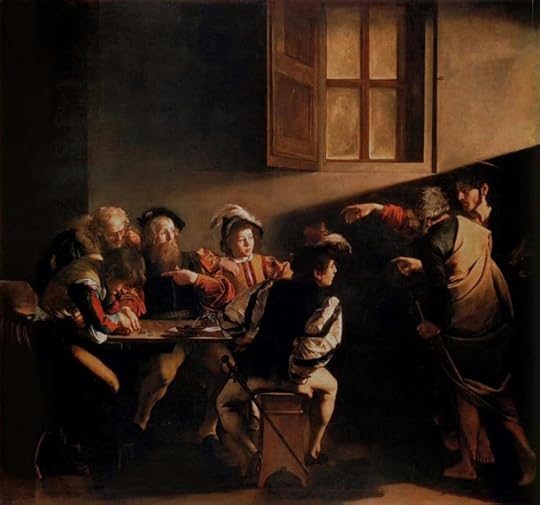John Janaro's Blog, page 89
October 5, 2021
"Autumn Impressions 1"
These three works I will call, collectively, "Autumn Impressions 1" - which of course implies that I will continue to pursue this theme. This is Digital Art by JJ - with variations in the freedom of the use of color. It is therefore not based on what we're seeing around here in Virginia right now.😉🌿🍂🍁



October 4, 2021
The Conversion and Vocation of Saint Francis
 Today is the celebration of one of the very greatest of all the Church's saints: Francis of Assisi.
Today is the celebration of one of the very greatest of all the Church's saints: Francis of Assisi. Some years ago (April 2015), I wrote in my monthly column in Magnificat the story of how this "rich young man" began to follow Jesus on a path that would radically change his life and all of human history. There are many well-known parts of the famous story of Saint Francis's conversion and renunciation of his wealth, especially the dramatic moment when he stripped himself, returned his clothes to his father, and knelt before the bishop. The cloak which the bishop used to cover Francis became the prototype for the Franciscan religious habit. What we don't often hear about, however, is the importance of the mentoring relationship of Bishop Guido of Assisi to this extraordinary young man entrusted to his care: how he humbly aided, encouraged, and supported the vocation of Saint Francis.
Here is the text of my article on the conversion story of Francesco Bernardone, the Umbrian merchant who left everything for Christ, only to find imperishable riches and to give a witness that enlightens us even to this day:
The outlines of St. Francis’s conversion from a rich young man and would-be knight to a great saint are well known. We recall his lavish and frivolous youth, his military misadventures, and his return to Assisi in 1205 after imprisonment, illness, and a mysterious experience that drew him to a greater service.
In these days, at the dawn of one of the greatest vocations in all history, God’s grace worked powerfully but mysteriously to lead the searching young Francis to the awakening of religious devotion. Francis went on a pilgrimage to Rome, and then returned not to his former life of comfort and pleasure, but to a time of solitude in the forests and the mountains outside the city, which led him in the end to the chapel and the now famous cross of San Damiano, where he heard the words of Jesus, to “rebuild My church.”
Christian and non-Christian interpretations of St. Francis often depict him as a man who left worldly life and its distractions so as to commune in a kind of isolation with God (or “nature”). Historians sometimes portray Francis as a spiritual maverick who transcended all institutions including the Church and her human ministers. But the life of St. Francis was not like the wandering of medieval heretical sectarians or today’s uncommitted spiritualists.
Rather, St. Francis was always entirely attached to the Catholic faith and obedience to the Church. In the year 1205, when Francis returned from Rome searching for God’s will, he found a person, a friend, who remained a crucial figure in the development of his vocation, a figure whose significance is seldom given its due weight: the bishop of Assisi.
Bishop Guido is known to history as the man who covered the naked Francis with his episcopal cloak after the young man publicly renounced his inheritance and all his property by returning even his clothes to his outraged father. But Francis and the bishop already knew one another by that time.
It was Bishop Guido who probably first advised Francis to seek solitude, not to wander but to pray, following the tradition of the desert fathers. After Francis heard Jesus in a vision from the cross of San Damiano, he probably met again with the bishop. By the time his father came with his lawsuit, Francis appealed to the Church’s protection and the bishop’s judgment. Guido knew well already the young man who shocked so many others by embracing total poverty, and who would later draw them to follow his sanctity.
Some accounts say that Francis, after giving back his clothes to his father, said that henceforth he would call only God his Father. But Francis also knew that God had become man, and that God’s fatherhood would draw close to him through the Church, concretely, through Bishop Guido. The bishop became Francis’s “spiritual father,” advisor, and sponsor as he embraced poverty and gathered his first followers. Guido did not try to manipulate Francis. He supported him as the grace of this new way of life unfolded. He was the ecclesiastical authority, but also a true friend. And it was bishop Guido, in Rome, who first sponsored the ragtag “lesser brothers” to a cardinal of the papal court, where Innocent III met the man sent by God “to rebuild My Church.”
October 1, 2021
Thérèse: A Child in the Arms of God
HAPPY SAINT THÉRÈSE DAY! 🙂
"It is enough to recognize one's nothingness and to abandon one's self like a child in the arms of God" (Saint Thérèse of Lisieux).


September 30, 2021
When "New Media" Was the Big Idea
 The study of media technology, and of its impact on the way we experience events and relate to one another, has been a preoccupation of mine for a very long time. I am a child of the first great electronic media explosion, and as I grew up and grew older I became aware of how much it shaped my perceptions of so many things. My brother and I are both “late boomers” (he was born in 1961, me in 1963). There is a significant gap between us and Anglo-Americans born 10 years earlier: the classical boomers, upon whom “the Sixties” fell like a hammer. We "late boomers" didn't really experience these turbulent times as times of radical change. The West's "Cultural Revolution" had already entrenched and established its ideology and values by the time we were old enough to understand the world around us. (I use this term Cultural Revolution in an analogous and qualified sense; it was very different from the awful drama that took place during this same time in China, but what happened in the West was profoundly uprooting and deeply problematic in its own way, and its consequences are still unfolding.)
The study of media technology, and of its impact on the way we experience events and relate to one another, has been a preoccupation of mine for a very long time. I am a child of the first great electronic media explosion, and as I grew up and grew older I became aware of how much it shaped my perceptions of so many things. My brother and I are both “late boomers” (he was born in 1961, me in 1963). There is a significant gap between us and Anglo-Americans born 10 years earlier: the classical boomers, upon whom “the Sixties” fell like a hammer. We "late boomers" didn't really experience these turbulent times as times of radical change. The West's "Cultural Revolution" had already entrenched and established its ideology and values by the time we were old enough to understand the world around us. (I use this term Cultural Revolution in an analogous and qualified sense; it was very different from the awful drama that took place during this same time in China, but what happened in the West was profoundly uprooting and deeply problematic in its own way, and its consequences are still unfolding.)Overall, the time period of the Sixties requires a less sentimental, more clear-eyed historical appraisal, which boomers cannot provide and which I'm not likely to see in my lifetime. My point here, in any case, is not to evaluate that period in terms of "what was good" (and there was much that was good) and "what was bad" (which requires precise discernment) and "what was ugly" (which, well... ugly is ugly). My point is that someone born in 1963 didn't experience the particular earthquakes of those times, but simply understood their social and cultural consequences as their given milieu.
This is certainly true about the media revolution. We first opened our eyes in a world in which every house had at least one television set, many (including ours) had two TVs, and more and more were acquiring a fascinating new thing: the color television. Every household also had one or more record players (increasingly “stereophonic”), numerous portable radios, and coffee tables with magazines full of color photographs.
These were widely distributed new things in the early Sixties, but we were also new, and we grew up with their ubiquity as something taken for granted. I have been told that the first complete sentence I spoke in toddlerhood was, “Winston tastes good” (TV was full of cigarette commercials back then).
Something happened in those years that involved more than just the technology of “talking and moving pictures.” My parents’ generation found all of that in the local cinema. TV brought the audiovisual experience into our homes and placed it at our fingertips. By the time I was born, TV had adapted to the domestic intimacy of its position and had begun to shape the environment of every home. We were not simply given “shows” at times and in places; we had a box in the living room that was “alive” with continuous audiovisual content, and watching “live” news and entertainment at home made us not only spectators but also participants “drawn into” the event and activities of the global village.
In 1965, when Marshall McLuhan coined the phrase “the New Media,” he was speaking about television. TV was a window in our homes that was open to the world, and it made us feel more and more “involved” with what we saw of that world (for better and for worse).
As a child I saw through that window an astronaut’s boot touch the surface of the moon for the first time. I also saw bombs and fires burning in the jungles of Vietnam, and heard machine guns popping on video footage from the evening news while I played with my toys. And, of course, we watched situation comedies, Saturday morning cartoons, and we remember the advent of children's educational TV: Sesame Street, Mister Rogers, and all that.
As I grew older, we moved from New York to Pittsburgh, and in the early 1970s my father finally purchased that magic-box-of-my-dreams - a COLOR television set. It was a huge piece of furniture with built-in analog speakers and (I think) a 17 inch screen. No doubt the quality of the image on a 1972 color TV would be considered appallingly bad in today's world, but for us it was mind-expanding. The "world-coming-out-of-the-box" looked nearly like the living room where we watched it.
Now, I don't want to give the impression that we watched TV "all the time" when we were kids. Certainly not! For one thing, it was impossible. Television stations didn't even broadcast 24/7 back in those days. They "signed off" around 1:00AM (here in the U.S.A. with the playing of the national anthem). There were only three commercial networks (CBS, NBC, and ABC) along with PBS ("public broadcasting" - largely privately funded) and these were spread across 8 or 9 "local affiliate" stations within the range of your antenna. (There was no such thing as "cable" back then.) Still, this was plenty.
And my parents put lots of wise restrictions on our TV time and content, of course (though we did find a few ways to cheat, harmlessly). We also had plenty of other things to do, like play outside, play games, hang out with friends, do experiments, read. I attempted to play many sports, which I loved passionately. Sadly, my lack of talent was only exceeded by my excessive overthinking (even then...😳). Music and art came much more naturally to me. Nevertheless, sports still played a big role in my growing up... thanks to television. My father and I bonded over watching sports on TV in the 1970s. And what a decade it was for sports, especially if you happened to be a Pittsburgh Pirates and Steelers fan.⚾🏈😊
But this is not a personal memoir: I am mentioning all these things to exemplify how this "New Media" technology, especially television, accustomed us to regular and convenient access to "extended experiences" of the world, people, and events. The images and sounds of "New Media" had entered the domestic and personal sphere of human beings and had established themselves (as if they had always been around, like trees and mountains) from the time of my earliest memories.

"Winston tastes good," said the toddler JJ in 1964. There were no regular smokers in the family. Print ads for cigarettes were abundant, but I couldn't read yet. It was a television advertisement (the full jingle was "Winston tastes good like a cigarette should") that I had seen and heard... but no, that's not a sufficient way of describing it. It was an audiovisual phenomenon that appeared repeatedly, that "came into my home" and "settled in" along with my toys and our furniture and the people I saw and heard all the time. Not that I mistook the televised image for something that was "really" in the room. Television had its own way of "inhabiting" the environment (today we use the word virtual to describe media communications of all kinds, but I don't think this word clarifies much the peculiar experience we're indicating).
Indeed, television had changed (perhaps even radically) the structure of the home environment. Of course, people would say that you weren't forced to watch TV; that you had control over the medium; that you could choose to turn it on or to turn it off. But human beings don't exactly work this way. Human freedom and human choices are usually made within a context, a realm of accessible possibilities to which people become acclimated. Moreover, humans are social and communicative beings who "extend themselves" (actively and receptively) through the "means" provided by the interaction between their capacities and the resources of their environment.
Television was (and still is) a medium of audiovisual communication that draws us in to certain types of connections with the larger world. It gives a partial presentation of external phenomena, focused on sight and sound while leaving tactile sensibility out entirely. You can climb Mount Everest with National Geographic while sitting on the couch in your warm living room. Indeed, a plethora of experiences are now available by means of a mediated, partial participation. Live events or recorded material of the actions of others can also be "shared" on a much wider scale than ever before. Wider possibilities have also opened up for dramatic presentations.
There is the danger of becoming "unbalanced," in our way of perceiving things if we live like couch potatoes. We need to put our feet on the ground, literally, and engage reality in an integrated fashion. This is all the more true in today's interactive media environment. We must also find space for silence and interiority. The perennial challenges of human living may require more conscious attention and commitment.
The artificial nature of these kinds of media, moreover, cannot be overcome. It will always be a little strange to have access to such vivid images of things that are not immediately present to our sight. That is why communication is implicit to the process. The enhanced visibility of the colored feathers of a Bird of Paradise is possible for me only because it is mediated - not simply by television, but also by the intelligence, intentionality, and hard work of camera people, producers, etc. We depend on the producers of audiovisual content to be honest and trustworthy, and we must therefore assess wisely what is presented to us and the resources that are worthy of our trust.
That was true in the days of my youth, when the New Media was television. We have a double sense of responsibility with today's interactive media, where we not only perceive what others show us, but also share what we choose to present to them. A lot is riding on mutual trust. A lot is riding on the respect we have for one another as persons, and a common commitment to seeking the truth and the fullness of life.
September 29, 2021
"National COFFEE Day!"
Someone, somewhere, decreed that this is "National Coffee Day" (every day is JJ Coffee Day, hah hah😆😋, but still...). As my contribution to the festivities, I would like to share this illustrative graphic.😉

September 28, 2021
Scenery, Saints, & Rock Stars: Avril Lavigne Turns 37
 I have been doing lots of saint's days and beautiful outdoor pictures lately, but if you read this blog you know that we range far and wide with topics considered. Music is a fascination I have followed all my life, and it's time to mark another anniversary in the musical world.
I have been doing lots of saint's days and beautiful outdoor pictures lately, but if you read this blog you know that we range far and wide with topics considered. Music is a fascination I have followed all my life, and it's time to mark another anniversary in the musical world.Avril Lavigne is one of the "millennial" era’s pop stars that I can’t help appreciating as an artist (in spite of some ‘facepalm-worthy’ periods of her career). She is also a kind of multifaceted, wide-ranging yet concentrated symbolic figure who reflects the dramatic tensions, frustrated longings, and tenacious aspirations of the generation that has grown up with her over the past 20 years. In the secular, aesthetic sense, she has projected a sustained multimedia image that could be called “iconic” (along the lines of what Marshall McLuhan meant by this term in his pioneering media studies). You may have seen her recent GEICO commercials which, for her contemporaries, are self-explanatory - while also being funny enough for everyone else.
Still... Avril Lavigne in a car insurance commercial? Huh?
But before I wander too far into these speculations, let me say “Happy Birthday Avril!” She turned 37 years old yesterday. I am happy for her first of all for a very personal reason: her Lyme Disease remains in remission. And she continues to work to help other people who (like me) have more… ummm… “complicated” cases of this debilitating illness.
Avril seems to be doing okay with her health. Though still drawing somewhat on the theme of “never growing up” (which was - I think - a sad theme in 2012), it’s more tongue-in-cheek these days. Avril’s sense of humor and almost intuitive genius for self-parody are at work, as well as the fact that she is one of those bright petite people who just looks young.
 Also, she still seems like a child in many ways, not all of them positive ways: there is an impression of a damaged, fractured, interrupted life - like many rock stars and celebrities who become famous in their youth. I feel like Avril is afflicted with a bewildered, broken, half-innocence - obstructed by many distractions but groping in the fog in search of paths forward toward maturity.
Also, she still seems like a child in many ways, not all of them positive ways: there is an impression of a damaged, fractured, interrupted life - like many rock stars and celebrities who become famous in their youth. I feel like Avril is afflicted with a bewildered, broken, half-innocence - obstructed by many distractions but groping in the fog in search of paths forward toward maturity.I mean no condescension here. I say this with great respect and affection, with some familiarity and much empathy for the obscure sufferings of artists, and a particular solidarity with my fellow Lyme survivor. Avril has often tried too hard to act like a hard-partying, hard-cussing, weird rock-chick rebel; it isn't really convincing in a deep-down way. Underneath, there's a lot of vulnerability, a generous spirit, a loveable soul. I'm always praying for her. I pray too for the puzzled generation she represents, who now find themselves surprised and unprepared for the "middle-aged" life that will soon be upon them.
The word is that Avril has new music coming out before the end of the year. But she doesn’t have to rush it, as far as I’m concerned. She has an amazing singing voice, and I hope she uses it well. And I wish her many more years of creativity and renewed health.🎶
September 27, 2021
Saint Vincent de Paul On Kindness and Humility
 Today we celebrate the memorial of the 17th century French priest Saint Vincent de Paul, who is remembered especially for his service to the poor. Here is some advice from him on kindness, humility, and confidence in God that will nourish all of us:
Today we celebrate the memorial of the 17th century French priest Saint Vincent de Paul, who is remembered especially for his service to the poor. Here is some advice from him on kindness, humility, and confidence in God that will nourish all of us:"We should not worry too much about temporal affairs. We ought to have confidence in God that he will look after us since we know for certain that as long as we are grounded in that sort of love and trust we will be always under the protection of God in heaven, we will remain unaffected by evil and never lack what we need even when everything we possess seems headed for disaster.
"We should make a great effort to learn the following lesson, also taught by Christ: 'Learn from me because I am gentle and humble in heart.' We should remember that he himself said that by gentleness we inherit the earth. If we act on this we will win people over so that they will turn to the Lord. That will not happen if we treat people harshly or sharply.
"And we should also remember that humility is the route to heaven. A loving acceptance of it when we are humiliated usually raises us up, guiding us, as it were, step by step from one virtue to the next until we reach heaven. This humility was very often recommended by Christ himself, by word and example, and we should make a great effort to master it. Humility is the basis of all holiness in the Gospels and a bond of the entire spiritual life. If a person has this humility everything good will come along with it."
September 26, 2021
September Scenery
Most of this month of September 2021 was pretty hot in Virginia. But the Autumn weather is finally beginning (we hope) and there is a good chance we may have a couple of months of mostly nice days to look forward to (though, alas, they will be increasingly shorter days).
I am looking forward to going out more, and getting back to my routine of walking and "hiking" around the neighborhood.
September is a very "green" month around here, but the overgrowth of the long Summer is "ripe" and ready to "fall." I have captured some scenery via photography, digital art, or (usually) some combination thereof. The first digital art picture is "Casa Janaro" as it appears on a beautiful, cool evening like we had today:







September 24, 2021
Vlogging From "My Front Porch"
It's time for a new episode of "My Front Porch," the latest in a series of reflections poorly recorded on my iPhone and posted to my YouTube channel.
One of the reasons why I don't make more videos is that I don't have the tech savvy-ness or the energy to make them well. As you will see in this video, I have been feeling a bit more worn out lately (nothing new about this - my stamina has gone up and down in this manner for years). I apologize for not being more perky.
I just decided to "do it anyway" and toss it out there, and pray that it will do some good or be useful, somehow. I know that what I am saying needs to be said, so I'm doing the best I can.
September 21, 2021
The Calling of Saint Matthew
September 21: Happy SAINT MATTHEW'S DAY! "As Jesus passed by, he saw a man named Matthew sitting at the customs post. He said to him, 'Follow me.' And he got up and followed him" (Matthew 9:9).
And of course, here is the famous "Calling of Saint Matthew" painted by Caravaggio in the year 1600, which you should gaze upon at least once a year. It etches itself inside your mind eventually: this little room full of characters in 16th century dress, who somehow become "universal" in that moment when Jesus raises his human hand, between the shadows and the light, in that evocative gesture that - ultimately - is directed to each one of us.
We too are sitting at that crowded table, preoccupied with our own petty schemes. He points to us personally, recognizing us, summoning, offering, awaiting our response.




